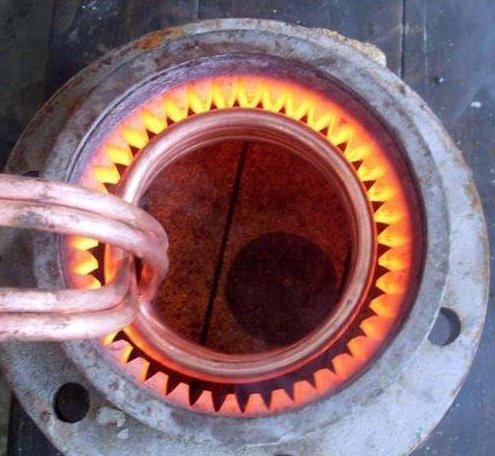- 14
- Mar
Operation rules for high frequency quenching equipment
Operation rules for high frequency quenching equipment
1. Operators of high-frequency quenching equipment must be trained and qualified before they can work.
2. When the machine tool is started, first turn on the water supply system, then turn on the power supply of the machine tool, turn on the voltage of the first filament and the second filament, turn on the high voltage, and adjust the output voltage knob to make the voltage reach the required working voltage. (Shutdown: The high-pressure output indication returns to zero, and the reverse returns to close in turn. The water supply system is delayed for 30 minutes to close)
3. Install the heating sensor without connecting to the power supply. The connection between the pressure-reducing ring and the sensor should be in good contact. If there is oxide, use emery cloth or other methods to remove it. Adjust the gap and height between the sensor and the workpiece, and keep it parallel to the side plate. (that is, adjust the position in the X, Y, Z directions, and record the data)
4. The cooling medium of high-frequency quenching equipment is usually water and a certain concentration of quenching liquid, and the temperature of the quenching medium is less than or equal to 50 °C; for some workpieces that cannot meet the requirements, it is allowed to adjust the concentration of the quenching liquid appropriately, but it must be ensured that the hardness is qualified and there is no quenching crack.
5. Before production, the quenching liquid nozzle needs to be exhausted, and there is no obvious white foam in the quenching liquid.
6. The effective hardened layer depth of the high-frequency quenching equipment shall be sampled and measured according to the testing requirements and relevant standards in the heat treatment process card to make it meet the technical requirements.
7. The operator needs to adjust the process parameters according to the requirements of the process, different sensors, and different quenching methods (fixed-point or continuous). Each batch of parts needs to be quenched 1-2 pieces before production. After testing, there are no high-frequency quenching cracks, and the hardness and the depth of the hardened layer are qualified before mass production.
8. During the production process, the operator must observe the voltage fluctuation of the machine tool, the temperature, heating area and position changes caused by the corresponding position and gap between the workpiece and the sensor. The cooling capacity change caused by the deflection of the spray pipe should be adjusted at any time if necessary.
9. High-frequency quenched parts should be tempered in time, generally within 2 hours after quenching. For carbon steel, alloy steel and products with different thicknesses with a carbon content of ≥ 0.50%, they must be tempered within 1.5 hours.
10. Workpieces that need to be reworked should be induction normalized before rework to prevent cracks caused by re-quenching. The workpieces are only allowed to be reworked once.
11. During the production process, the operator should conduct no less than three hardness tests (before, during, and at the end of the workpiece).
12. When an abnormal state occurs during the operation, the operating power should be turned off immediately, and the workshop supervisor should be reported to the workshop supervisor for adjustment or maintenance.
13. The operating site should be kept clean, dry and free of water, and there should be dry insulating rubber on the operating pedal to ensure the safety of the operator.

